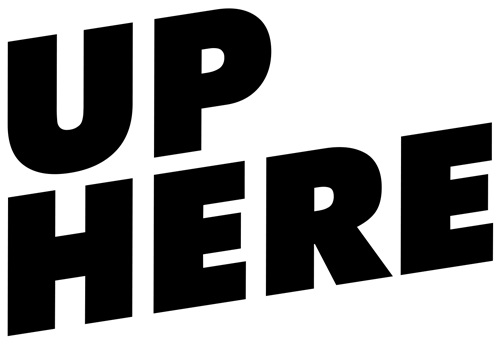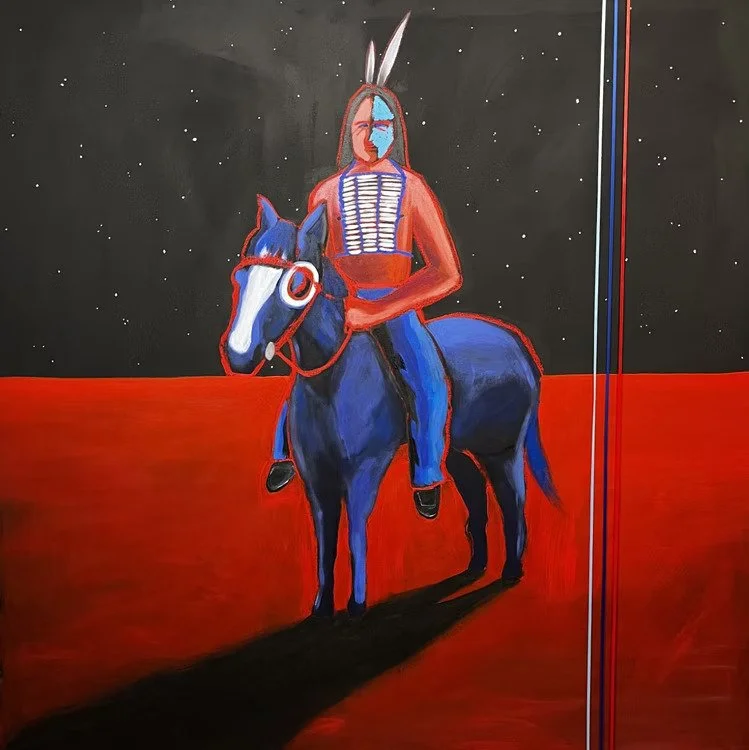Spirit sketches and bold visions: Meet Brody Burns
From ceremonies to canvas, Brody Burns channels Indigenous spirituality and the energy of the spirit world into vibrant, thought-provoking work. With a fearless approach to abstraction and storytelling, he invites Sudbury to explore the unseen connections between culture and creativity.
How did you become an artist?
Throughout my whole life, I have been an artist, doodling and drawing graffiti in class. During my time at the University of Saskatchewan, I was a psychology major (2021). In one of my classes, I was introduced to First Nations artists like Alex Janvier and the Indigenous Group of Seven. I was hooked after seeing what art could be through abstraction and the expressive style of painting. It was an easy transition from graffiti to abstract art.
Throughout my early adulthood, I’ve tried different careers: Canadian Forces, mining, woodshop, framing, and welding. I hated it. So, I pursued art on the side during my undergrad. Later, I was invited to the Master of Fine Arts at the U of S, and everything took off from there. I’ve been a full-time artist since graduating from the MFA in 2023.
I love art. I love creating new works. Experimenting is the best part, and trying new mediums. I don’t have a boss or anyone telling me what to do. Looking back now, it was obvious I was going to do something in the arts.
How does this year’s theme resonate with your work or your life?
The approach I had with my mural is the idea of colonization through Indigenous Futurism. You have this explorer coming to a new world, and the alien defeats him. Thus, the “Christopher Columbus” explorer can’t go back and talk about his findings. The alien killed him so that he could reintegrate back to the Creator, God, or the Source, or Allah, whatever you want to call it, knowing he would incarnate again in the physical world.
Then he has this realization upon his deathbed that everything comes from the Creator, and everything is the Creator, no matter how different things may seem; there is no separation from one another—everything is connected. Everything is light. It’s that process of his beliefs and ideas fading away as he becomes a spirit, or light orb, returning to the Creator, that he realizes he was wrong. This world is temporary, and the spirit world is the real home.
Are there recurring themes in your work?
Indigenous spirituality, energy, and vibration are more of the common themes among my work. I work both in abstraction and expressive representation. I do this through traditional methods like painting and drawing, but also through digital art like drawing, augmented reality, A.I. art, and projection mapping. I don’t like to stay in one area—that gets boring and overdone. I like experimenting with different styles and ways of making art.
The most important part for me is the achievement of the image no one has ever seen before, that fires all the synapses in the brain. Or the image that makes people remember their connection to the Creator and each other. That temporarily makes people forget the bullshit in their lives. That is what I’m trying to achieve with my work.
How do your surroundings influence the direction of your murals?
I think a lot of what I do comes from my culture—going to ceremonies like sweat lodges, sun dances, fasting, and so on. A lot of it is taken from the past and trying to reimagine it using modern techniques. It also comes from people that I’m around, conversations, what’s in my local galleries, as well as researching other artists.
I feel that with public art and travelling opportunities, I’m limited to the time frame I have. I could paint a mural in a day or a week, and they would both be very different. So, I feel that I have to tame back the wild style approach in me with abstraction. I think my canvas work and drawings can be a lot darker compared to public art. People will see an abstract piece that’s colorful and beautiful, but it might have a negative undertone to it. It’s a different way to transmute energy and emotion onto canvas.
What do you hope people will feel after seeing your mural?
I hope people feel inspired to create art or do something kind for one another. There’s a lot of bullshit going on in the world right now. Just for second breathe and take it the colors and shapes.
What’s your process like when approaching a new mural?
I just sketch and sketch until a narrative is formed that makes sense to me and the project. I’ve always felt that artwork comes through me from the spirit world. I open myself up to that energy and try maintaining a high vibration for it to flow. I trust the process and what comes out. Everything will work out and align.
Is there a dream project you’d love to pursue in the future?
I would like to paint a giant mural across a mountain that could be seen from miles away. Followed by a projection map onto it. That’s the dream for me.
What advice would you give to emerging artists?
Don’t be afraid to fail or take risks. I can’t grow or move forward without being okay with that. Don’t be afraid to ask for help; my artwork is a collection of other artists, profs, gallerists, family, and friends who have all helped me along the way. It’s the long game, and consistency is key. Keep drawing and practicing. Keep going. Believe in yourself and your vision.
Big thanks to our partner Barrydowne Paint for their contribution in keeping our muralists stocked and our walls vibrant, one brushstroke at a time.







